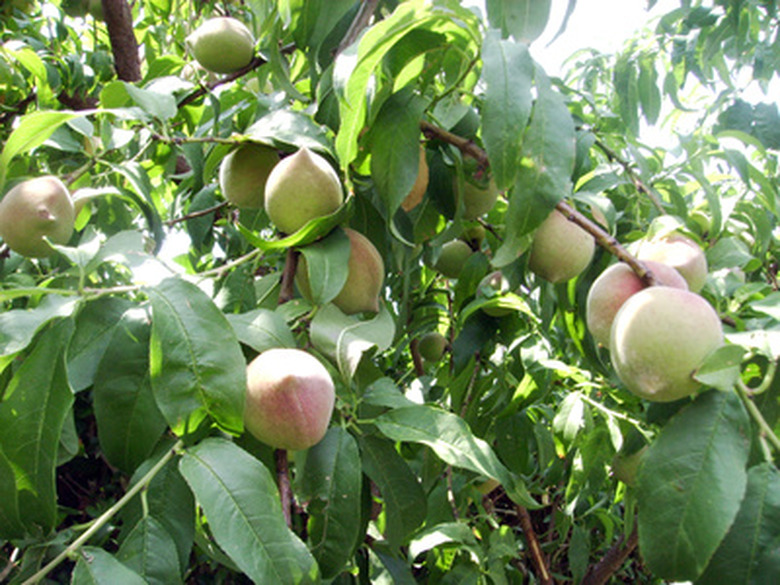How To Grow Deciduous Fruit Trees In Hawaii
Things Needed
- Shovel
- Organic compost
- Organic mulch
In Hawaii, most fruit stands feature exotic mangoes, bananas, coconuts and other tropical fare. While deciduous fruit is not commercially grown in the State, it is possible to grow certain varieties in the home garden or orchard. Since these trees require a period of chilly temperatures to set fruit, they grow best at elevations above 2,000 feet in Hawaii. Some low chill cultivars will grow well and dependably produce fruit in warmer locations, provided they receive proper care.
Step 1
Select a variety of deciduous fruit tree appropriate for your location. Choose plums and apricots for warm, lower elevations, since they are the more heat tolerant. Try coaxing peaches and apples along at mid elevations or in low, windward areas. Pay attention to the chill time requirements for each variety you choose to assure you will get dependable harvests. Purchase only healthy trees from a reputable local nursery.
- In Hawaii, most fruit stands feature exotic mangoes, bananas, coconuts and other tropical fare.
- While deciduous fruit is not commercially grown in the State, it is possible to grow certain varieties in the home garden or orchard.
Step 2
Choose a location sheltered from strong winds in full sun. Select a place where your trees will receive partial shade in summer in low elevation areas because temperate climate fruit typically blooms in the heat of Hawaii's summer and bears fruit in early fall. Avoid damp, windy or coastal locations.
Step 3
Dig planting holes at least three times as wide and twice as deep as the tree's pot or root ball. Cover the bottom of the planting hole with six inches of organic compost, such as well rotted macadamia nut hulls, and mix it with the native soil using a shovel.
Step 4
Add enough soil to the hole so that the tree's crown will be at the same level it was growing in the pot. Remove the pot or burlap completely and carefully place the tree in the hole. Fill the hole with soil and gently press to firm.
- Choose a location sheltered from strong winds in full sun.
- Cover the bottom of the planting hole with six inches of organic compost, such as well rotted macadamia nut hulls, and mix it with the native soil using a shovel.
Step 5
Create a four inch deep well around the outer rim of the hole to prevent water from running off and water thoroughly to settle the soil and remove any air pockets.
Step 6
Apply a four inch layer of organic mulch, such as shredded bark, around the drip line, avoiding six inches around the trunk. Maintain this layer of mulch as the tree grows to keep the soil evenly moist.
Tip
Try growing low chill apple cultivars like "Granny Smith", "Dorset", "William's Pride" and "Anna". Experiment with low chill apricot varieties such as "Flora Gold" Gold Kist" and "Perfection". Try "Florida Prince" peach for peaches in even low elevation areas in Hawaii. Plant low chill plums, such as "Salsberry", "Methley" and "Shiro" for dependable fruit, even at lower elevations.
References
- Permacopia; D. Hunter Beyer and Franklin Martin; 2002
